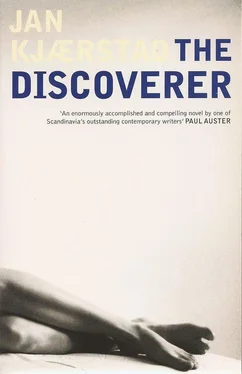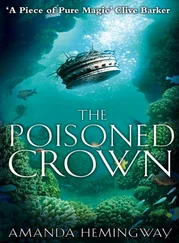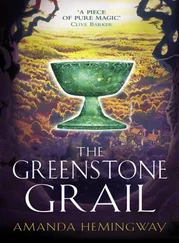Jan Kjaerstad - The Discoverer
Здесь есть возможность читать онлайн «Jan Kjaerstad - The Discoverer» весь текст электронной книги совершенно бесплатно (целиком полную версию без сокращений). В некоторых случаях можно слушать аудио, скачать через торрент в формате fb2 и присутствует краткое содержание. Год выпуска: 2009, Издательство: Arcadia Books, Жанр: Современная проза, на английском языке. Описание произведения, (предисловие) а так же отзывы посетителей доступны на портале библиотеки ЛибКат.
- Название:The Discoverer
- Автор:
- Издательство:Arcadia Books
- Жанр:
- Год:2009
- ISBN:нет данных
- Рейтинг книги:5 / 5. Голосов: 1
-
Избранное:Добавить в избранное
- Отзывы:
-
Ваша оценка:
- 100
- 1
- 2
- 3
- 4
- 5
The Discoverer: краткое содержание, описание и аннотация
Предлагаем к чтению аннотацию, описание, краткое содержание или предисловие (зависит от того, что написал сам автор книги «The Discoverer»). Если вы не нашли необходимую информацию о книге — напишите в комментариях, мы постараемся отыскать её.
The Discoverer — читать онлайн бесплатно полную книгу (весь текст) целиком
Ниже представлен текст книги, разбитый по страницам. Система сохранения места последней прочитанной страницы, позволяет с удобством читать онлайн бесплатно книгу «The Discoverer», без необходимости каждый раз заново искать на чём Вы остановились. Поставьте закладку, и сможете в любой момент перейти на страницу, на которой закончили чтение.
Интервал:
Закладка:
For the first time, during these years, I felt motivated to read. Or rather: I browsed, frantically skimming page after page, hoping to spot ideas, hints, clues which would help me with my project. I scrutinised the other classification systems, from Francis Bacon’s and Henry Evelyn Bliss’s to that devised by the far-sighted mathematician Dr S. R. Ranganathan, before expanding my studies to include every endeavour to organise the world of thoughts and things. I delved with a will into the zoological and botanical systems — in particular Carl von Linné’s twenty-four classes, as well as his optimistic breakdown into genus and species and the resultant two-part Latin name. I pored over medical books on anatomy, I studied the periodic table, I struggled until I was blue in the face to grasp the reasoning behind the twenty-eight magnificent volumes of Diderot et al.’s great French Encyclopedia, I even looked at various books on mazes in all their historical forms.
I sat in the reading room — I saw myself as being in a kind of academic outside-left position — enlightening myself on the infinite variety of human knowledge: biology, economics, meteorology. I read and read, leafed through book after book. By bringing all my mental powers to bear, I eventually decided what I considered to be the main branches of learning, the fundamental categories — I gave them new names, instead of such long-winded appellations as philosophy and natural science — then I split these up into smaller sections and — this was the hardest part — devised a sequence for these main and secondary disciplines which might disclose new inter-category relationships.
I sat on the top of the Physics Building, a gateway to the seat of learning in Oslo, a little cathedral, thanks to Per Krohg’s frescoes in the entrance hall, but I was studying neither physics nor astrophysics, I was reorganising all the world’s knowledge. I sat in the reading room, month after month, in that yeasty atmosphere, trying out idea after idea. I created divisions according to an evolutionary system, based on how things appeared to have emerged in the course of time. I arranged the main classes in the order in which they ought to be studied by someone seeking to be educated. I created systems which progressed from the general to the specific. I tried another sequence which ran from the specific to the general. In one experiment I began with the minor groups and subjects, not the main classes, then drew these groups together to form a bigger picture; attempted, you might even say, to get them to merge together of their own accord, working from the bottom upwards. I tried everything: for a long time, in one of my drafts Ant was a main class, in another I had two categories entitled The Actually Human and The Covertly Human.
It’s odd. I have always believed that these were the years when I thought least about Margrete. I see now that I must have been thinking about her all the time. That she may have been the motive behind the whole Project. That this was another swim across an impossibly wide body of water.
One weekend I stumbled upon a fresh source of inspiration. I was on a visit to my parents at the house in Grorud, and when I went out into the garden on the Sunday morning to look at the apple trees I saw the sun glinting off some silken threads strung between two gooseberry bushes. I bent down to look, and there was a cross spider. It had just finished attaching the first frame threads of a web. What with the cross on the spider’s back, I could not help feeling that it would be as good as a church service just to sit here in the grass for an hour, observing with creeping fascination how the creature slung its wonderful wheel-web between the branches.
The snag with Dewey’s way of thinking was its disastrous one-dimensionality. The main classes and their subdivisions formed one long, vertical chain. My observation of the spider’s web inspired me to experiment with a new scheme in which the groups would also be ranged side by side in rows. Such a set-up might well reveal totally new, horizontal links between the subjects. A hitherto unseen interplay between, let’s say, biology, economics and meteorology.
I knew it was impossible, but ideally every book in a library would be placed in such a way that it abutted on every other book. It was something of this sort that I had dreamt of as I struggled to organise the books on Karen Mohr’s shelves. Each book should have connecting lines running in several directions. What I was looking for was a network, not a classification system. A similar notion had been running through my mind as I stood in the vast Central Lending and Reference Department in the Deichman Library. When you walked over to a shelf and pulled out a book, a string of others ought to be pulled out along with it. Sitting in the garden in Grorud, gazing at the spider’s web, I pictured myself taking Peer Gynt off its shelf in the Central Lending and Reference Department, and how, in so doing, I caused a number of other works to fall out, including some from other sections: a travel guide to Egypt, Norwegian folk tales, music by Edvard Grieg, the history of the National Theatre, a biography of Ibsen, a history of language, poems by Lord Byron, a lavishly illustrated book on the island of Ischia in the Bay of Naples.
In the reading room on the top of the Physics Building I did occasionally leaf through my astronomy books — more for fun, really. I was particularly taken with a little-supported theory that there might be a tenth planet, lying beyond Pluto, dubbed Planet X. So it came about that I named my own search — or research as I cockily referred to it — Project X. Although it is possible that in adopting this letter I was also saying something else: I did not know what my project actually entailed. And thanks to my ill-fated encounter with Silapulapu, I am still none the wiser.
When the reading room closed I carried on working back at the flat in Hegdehaugsveien, to the accompaniment — morning and evening for many years — of Bach on the stereo, as if I were trying to deduce the spirit with which he bound his notes together; a spirit, a sort of glue almost, which I thought might be of help to my own ‘Kunst der Fuge’. I had eventually come up with forty-six main classes and a whole host of subdivisions, some of them denoted only by Greek letters. I had covered large sheets of paper with writing and these I spread out all over the living-room floor. Time and again I was heartened by the astonishing correspondences that came to light when I read across or down or diagonally. But just as often, even with Bach’s fugues playing in the background, I saw only impenetrable constellations. Although they may simply have seemed that way due to my own limitations.
At the weekends, summer and autumn, I went out to Grorud where I would spend the mornings in the garden, looking at the cross spiders building their wonderful silken wheels among the bushes. For some weeks I was also able to stuff myself with gooseberries which, with their sharp, complex flavour — the tough, hairy skin and the soft flesh that was both sweet and sour — spurred me on in my hunt for subjects rich in contrast. When the dew was lying and the sun shining, the webs looked like little galaxies, spirals of glittering stars. I wanted to spy out the secret of their construction technique. The first stage of the process in particular appeared to be crucial, the way in which the spider attached the anchor threads, bridges of a sort, often with the aid of the wind, before commencing on the actual framework. It was these foundation threads which varied most from web to web. The radii, the spokes of the wheel, were always spun from the centre outwards. The construction of the capture spiral followed this same pattern, with strands radiating out from the centre and sticky threads running inwards again. Finally — and this really intrigued me — the centre was destroyed and respun. I never tired of lying there in the grass, watching those fragile, shimmering works of wonder take shape before my eyes.
Читать дальшеИнтервал:
Закладка:
Похожие книги на «The Discoverer»
Представляем Вашему вниманию похожие книги на «The Discoverer» списком для выбора. Мы отобрали схожую по названию и смыслу литературу в надежде предоставить читателям больше вариантов отыскать новые, интересные, ещё непрочитанные произведения.
Обсуждение, отзывы о книге «The Discoverer» и просто собственные мнения читателей. Оставьте ваши комментарии, напишите, что Вы думаете о произведении, его смысле или главных героях. Укажите что конкретно понравилось, а что нет, и почему Вы так считаете.












